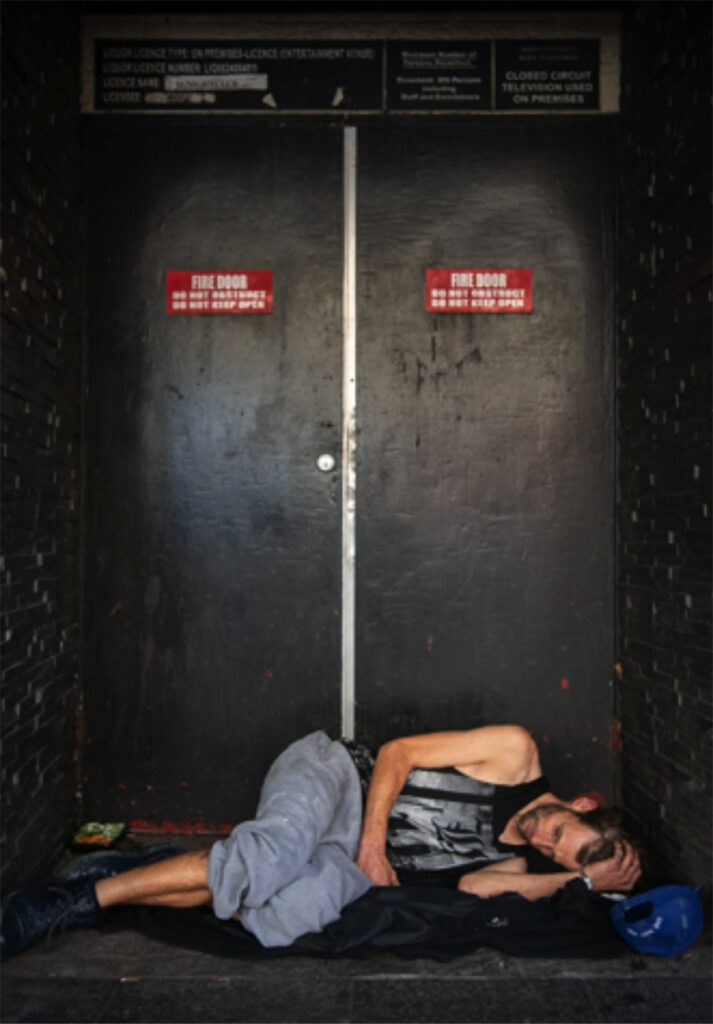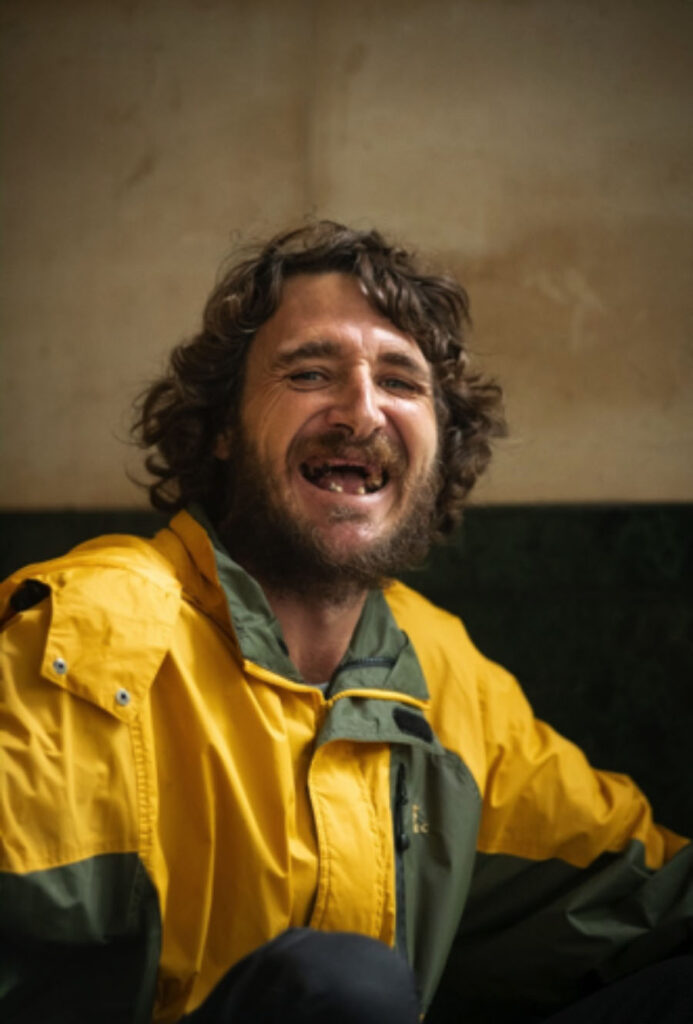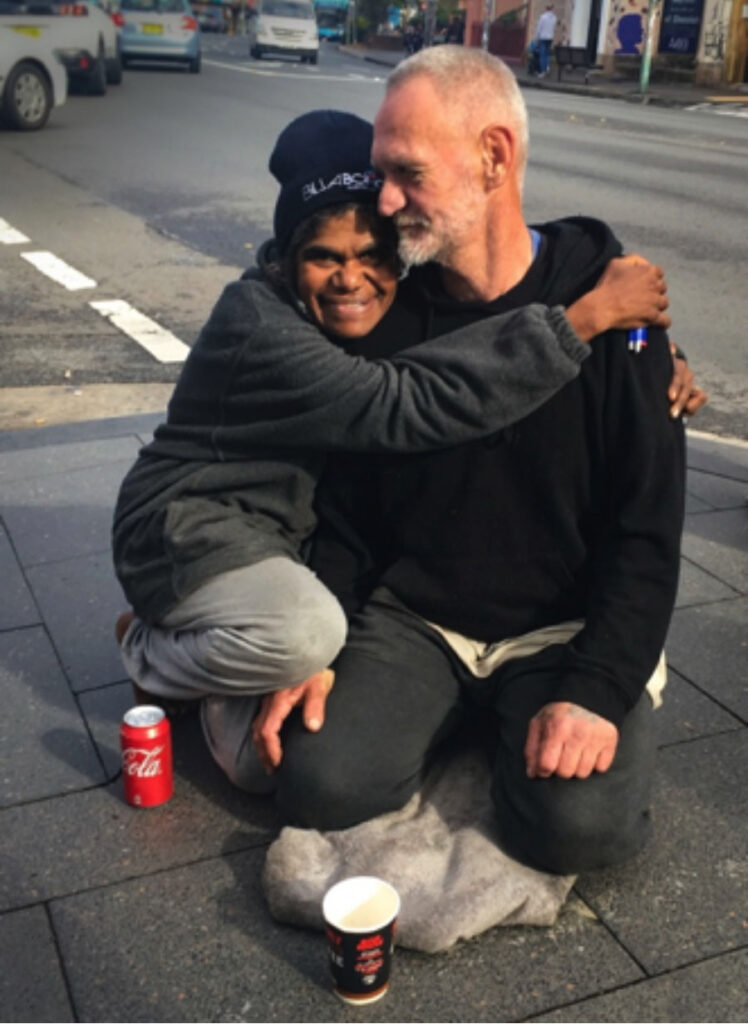As Dharma Care Inc. (DCI) embarks on developing a new domestic project on homelessness, we invited Dr. Livingston Armytage AM to participate in our initial discussions, and share his knowledge and experience of homelessness.
Livingston is an international justice reformer and photographer. In preparation for his next photographic book, “Homeless”, he spent 24 hours on the streets of Newtown and Circular Quay in Sydney. He also travelled on the “night train” with sheltering rough sleepers.
In the winter of 2019, I decided to photograph the homeless in Sydney. I wanted to portray these people with dignity. But first, I had to experience and understand homelessness.

So, I left my home and slept rough on the streets of inner Sydney. I was exposed, cold and frightened. It was a long sleepless night. All night trucks thundered past my head. The street echoed with the voices of revellers wandering by. Finally, I got up at 4.45 am and took the first train to Circular Quay. The ferries arrived. Then the stockbrokers, lawyers and executives came up the ramps and started to walk toward me. But I was invisible to them. They walked round without seeing me. What was the expression on the faces of those few who looked: pity, disgust? For two hours, no one stopped. Then a hand silently placed $5 in my cup. I raised my head in thanks. But she was already gone. And I wept, elated by her kindness.

Over the following months, I met many homeless people as I discovered the streets of inner Sydney: Woolloomooloo, Kings Cross and Newtown. I shared time, good company and food with many of them. And then I took the ‘night trains’ that leave Central around midnight for the city’s peripheries in readiness for the next morning influx, laden with sheltering rough sleepers.


Scott, who mentored me through my experience of homelessness, told me that he felt judged as being a failure and then ignored: “All that separates them from us is about two pay-packets.”

The stories of the homeless are many. Child abuse, severe injury, and psychosis are common. There is often substance abuse though it is usually a symptom, rarely the cause. There is always poverty, then trauma. One bad knock too many, and life’s balance can be shattered. It’s a frightening prospect. I tried living on the streets. It was hard, really hard. After 24 hours, I’d had a gut full.

In these photographs, I focus on the spaces occupied by the homeless on city streets, in parks, stations and trains. They are starkly public. Shop doorways, empty milk crates, a cardboard mat, crumpled bedding and bare walls. Mute spaces that we may not notice until they are vacated. They may be empty, but they have memory.

Do we see them, or have we chosen not to look? In the past, I had turned away from what I didn’t want to see because I was uncomfortable. It is not them who are the failures but our society. The homeless reveal, should we choose to see, the state of our community. It is our humanity that is on display.


Livingston Armytage
Livingston’s latest photographic book ‘Homeless’ will be published by Chatwin in the US and T&G in Australia and Europe in mid-2022.
All images © L Armytage 2021
